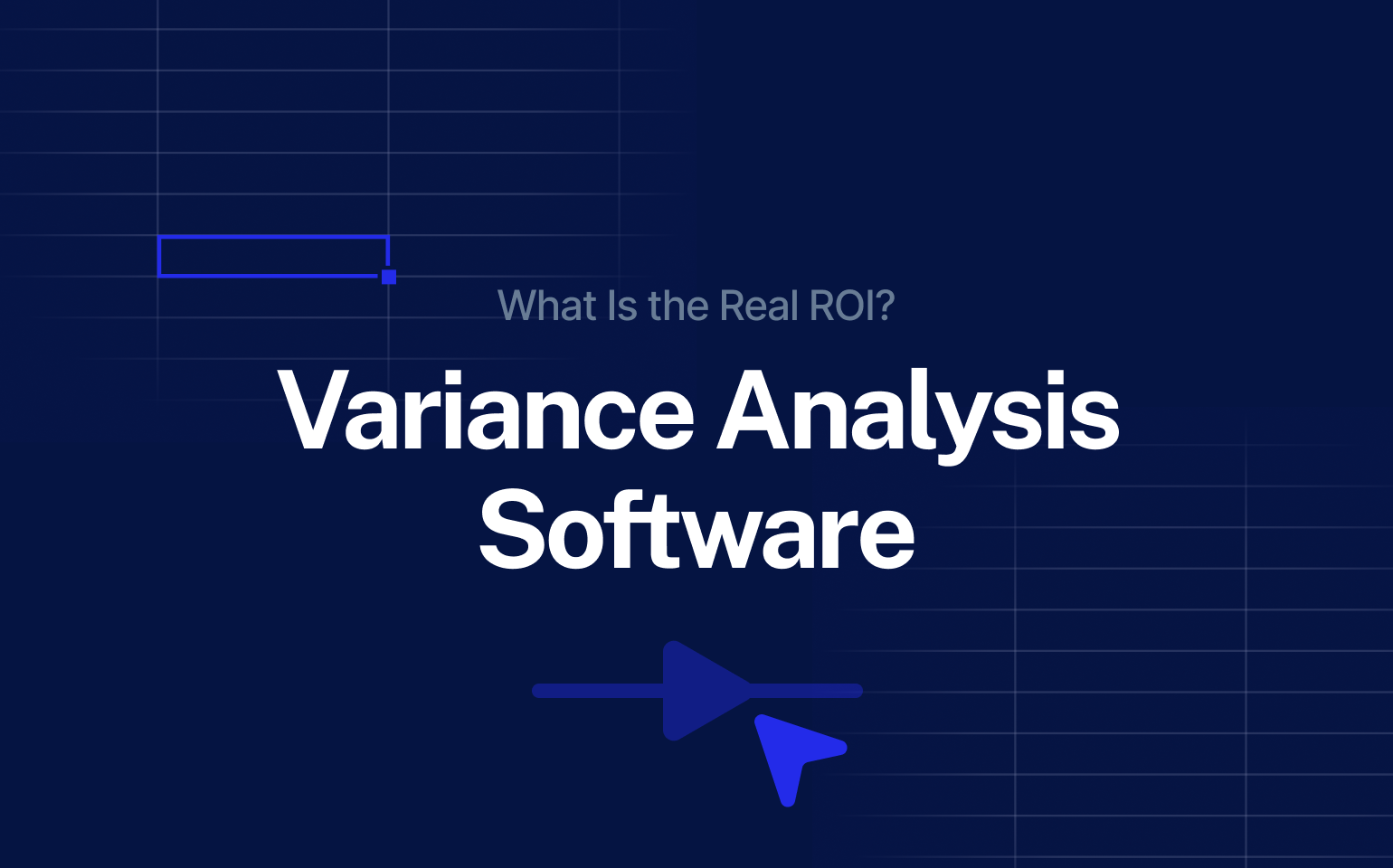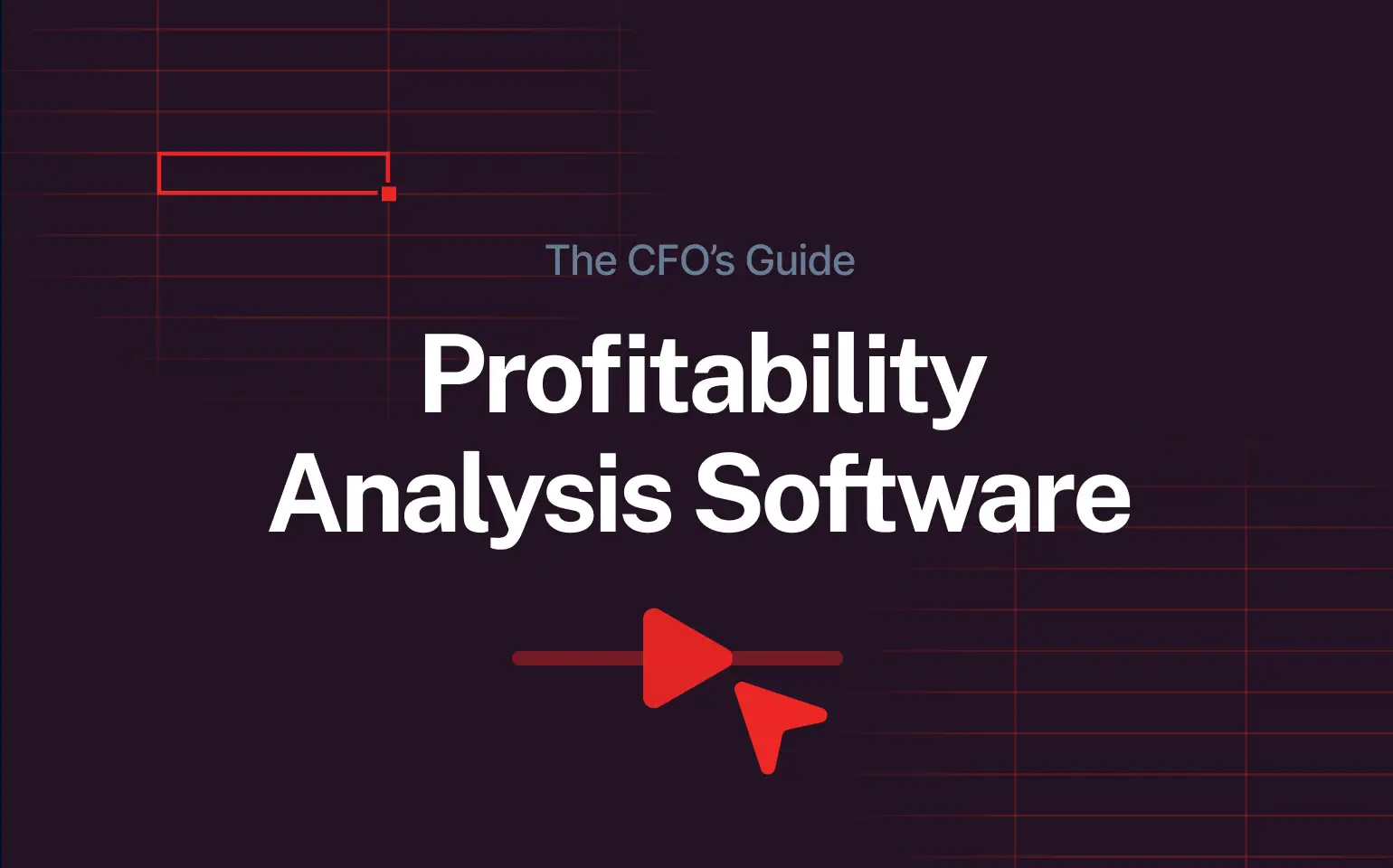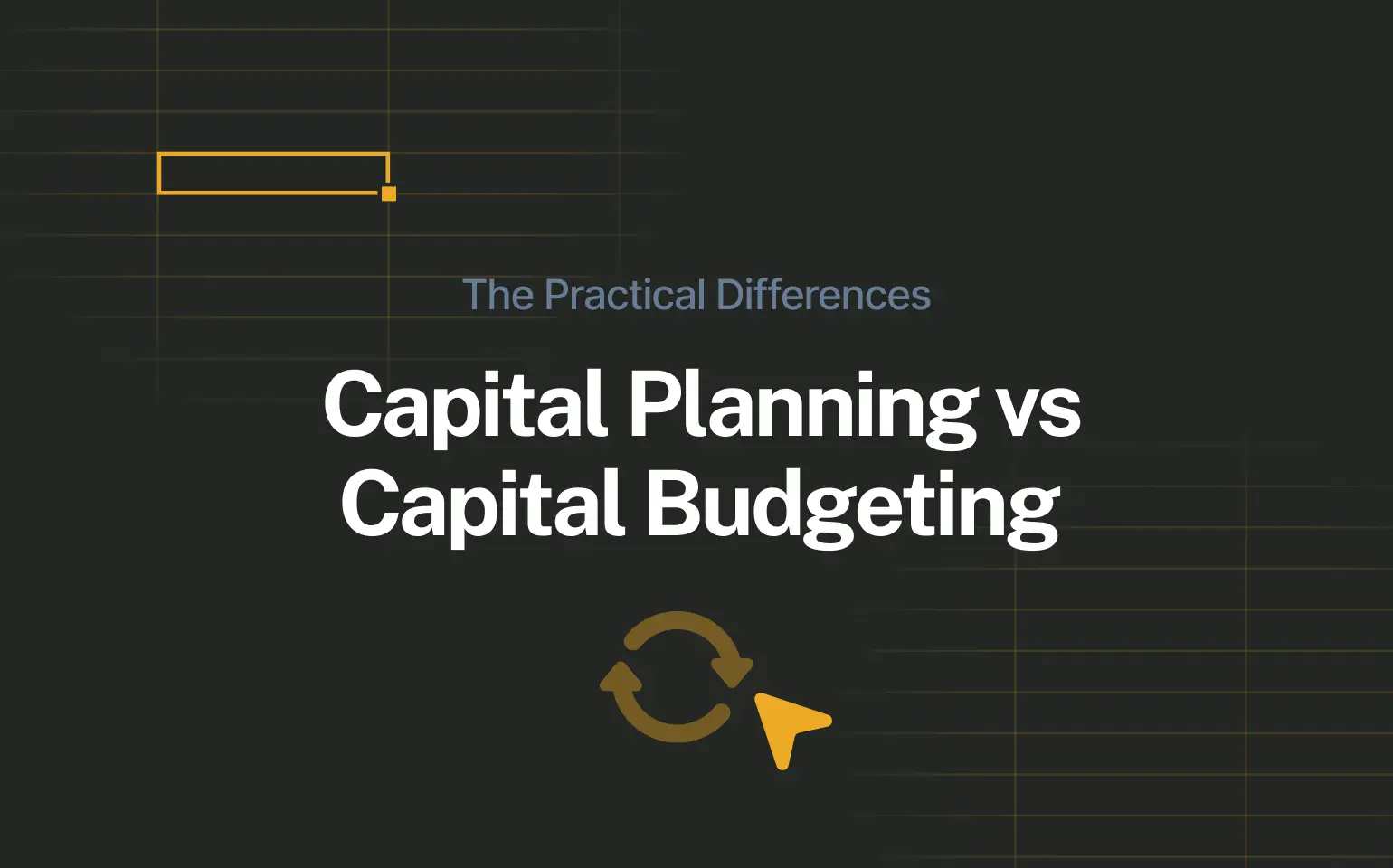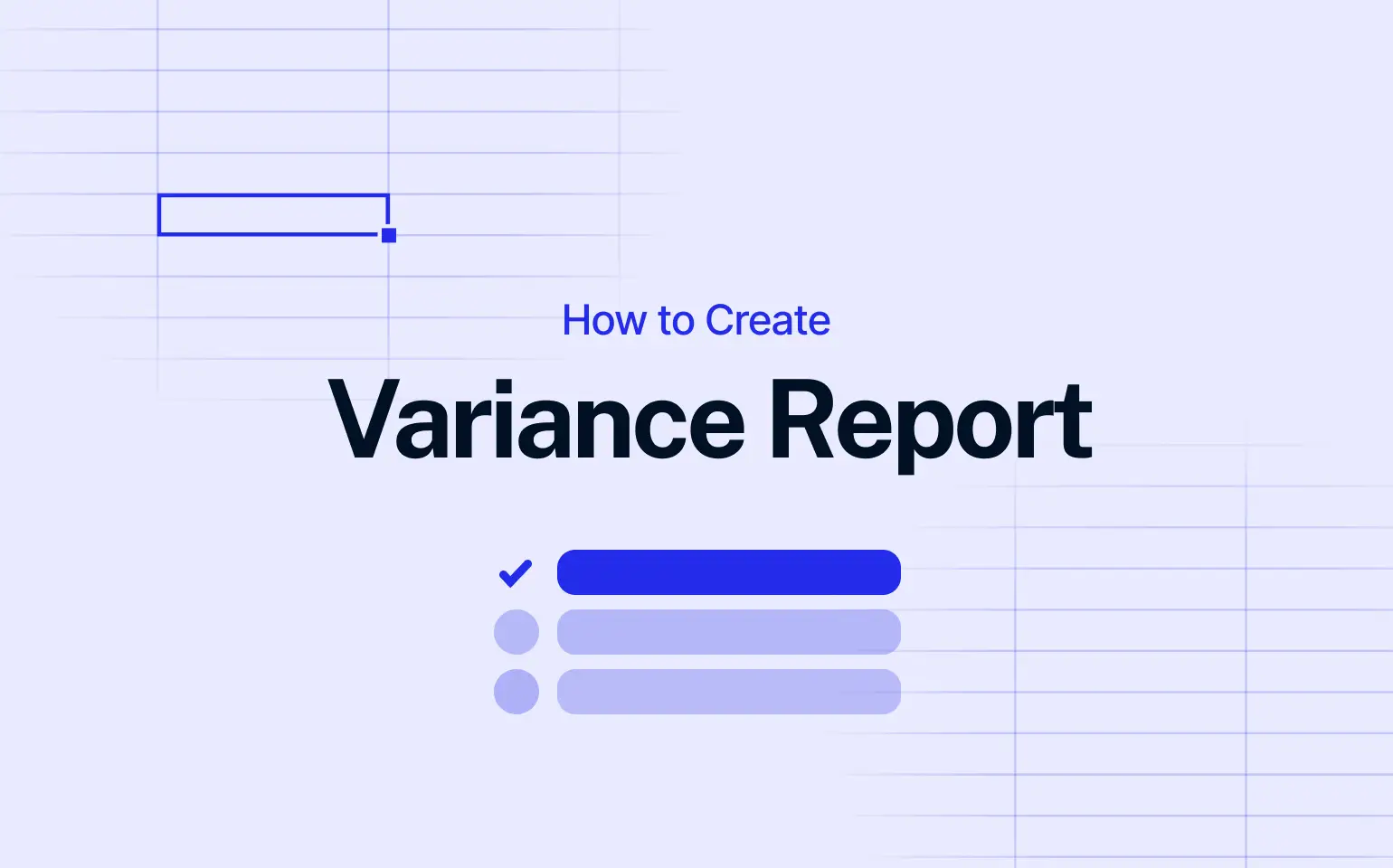Finance teams today don’t lack data. They’re buried in it.
Variance reports are created and shared all the time, but how often do they actually help you make a faster or better decision?
That’s the real bottleneck. Not in generating the report, but in connecting it to action fast enough to make a difference. And for companies running their variance workflows in Excel or disconnected BI dashboards, that lag can cost real money, especially when margins are tight or demand changes frequently and unpredictably.
Read: FP&A Software – A Practical Guide for Finance Teams
Variance analysis software is supposed to fix that. But whether it delivers depends on how it’s actually used, and what it’s replacing.
Key takeaways:
- Excel is slow and error-prone.
- BI tools lack planning integration.
- Modern tools enable real-time insights and faster action.
- ROI comes from time saved and better decisions.
- Avoid tools that only show static snapshots.
- Invest when timing matters – fast reforecasting, tight margins, board pressure.
- Goal = action, not just reporting.
Variance Still Matters - But Excel Slows You Down
Variance analysis is a core part of financial management, whether you’re tracking sales performance, production costs, or working capital. It helps explain the gap between plan and actuals, and ideally, lets you react before those gaps become problems.
But the way most companies handle it, in Excel, creates a lag that’s hard to ignore.
Imagine a food manufacturer with operations across five plants. Their controlling team would probably have to spend a couple of days each month consolidating raw material cost data in Excel.
What happens afterwards?
Each plant submits its version of the variance sheet, and the controller is left to manually reconcile and cross-check the numbers. By the time the final report reaches the CFO, procurement would have already made the same budgeting error again.
The numbers aren’t wrong; they are just too late to act on.
Excel is familiar, flexible, and powerful, but it’s not built for speed or collaboration across teams. When you’re managing hundreds of cost centers or multiple business units, Excel becomes a bottleneck. And that delay costs money.

Where BI tools and Excel fail in variance analysis
Most companies run variance reports in Excel, sometimes exported from ERP and visualized in Power BI. That’s fine, until it fails.
Here’s where these setups usually break:
- Too much manual prep: pulling data, formatting sheets, creating pivot tables
- Static snapshots: these variance reports show one moment in time, they don’t change as new data comes in
- Lack of detail: to understand cost center variances, you often have to dig into the ERP or ask department heads directly.
- Disconnected from planning: you spot a variance, but can’t adjust your rolling forecast in the same system
Recognize your case in any of these? You’re not alone.
Here’s how variance analysis software solves your problems.
What Modern Variance Analysis Software Should Actually Do
Good variance analysis software should take you from insight to action within the same day. That means:
- Live actual vs. plan updates as soon as new data is available
- Drill-down capability by region, cost center, product, or customer, without switching tools
- Tight integration with your planning models, so you can immediately adjust forecasts
- Collaboration-friendly workflows, where department heads and controllers can comment or propose changes
- No data prep, variance views are automated, not built from scratch every month
Read more: How to Create a Good Variance Report

The difference isn’t in fancier visuals. It’s in how much faster you can react.
Here’s a great example.
The pharma company JGL used to rely on Excel for market-level planning, which led to version control issues, inconsistent data, and long consolidation cycles. By switching to Farseer, they cut planning and consolidation time by 50%, automated key processes like OPEX, workforce, and sales planning, and enabled real-time updates across markets.
Instead of spending weeks reconciling spreadsheets, their finance team now reacts quickly to market changes, with cleaner data, faster forecasts, and better decisions.
What to Look for in Variance Analysis Software (And What to Avoid)
Not all variance analysis tools are created equal. Some speed up your decision-making, others just generate prettier reports. The best software doesn’t stop at showing you the gap between plan and actuals; it helps you understand why it happened and adjust in real time.
Here’s what to look for when evaluating tools, and the red flags that signal it might slow you down instead.
Must-have features of variance analysis software:
- Real-time actual vs. plan views
- Drill-downs without re-exporting from ERP
- Integration with planning (budgeting, forecasting)
- Fast implementation and easy onboarding for planners
- Ability to comment or collaborate inside the tool
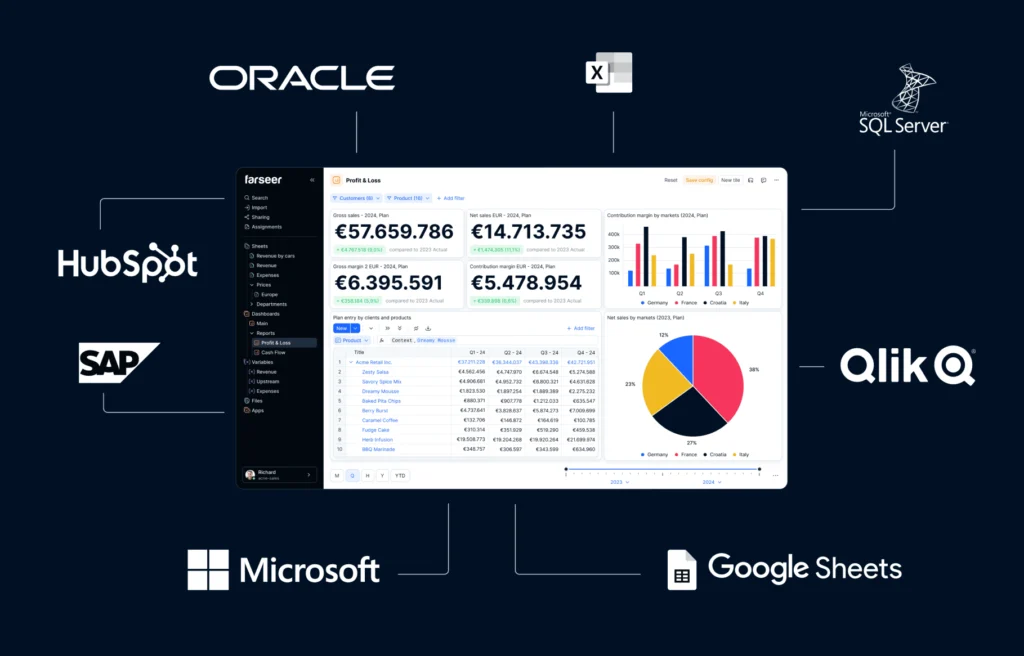
Red flags:
- No planning model integration (just a viewer tool)
- Snapshot-only reports
- Overreliance on IT for new reports or changes
- Too complex to maintain without external support
When to Invest in Variance Analysis Software
If you’re reviewing variance once a year at budget time, you probably don’t need software.
But if any of these apply, the ROI becomes clear fast:
- You have 10+ planners involved in budgeting or forecasting
- You’re doing quarterly or monthly reforecasting
- Your cost structures are changeable (materials, energy, logistics)
- You’re preparing for M&A, refinancing, or board scrutiny
- You want finance to spend less time explaining variances and more time acting on them
In other words, when the cost of inaction is higher than the cost of the tool.
ROI breakdown: where the value comes from
Let’s make it tangible. The real return on variance analysis software typically shows up in:
- Time savings: less manual consolidation, faster reporting cycles
- Fewer errors: no version chaos, fewer copy/paste issues
- Better alignment: faster variance-to-forecast adjustments across teams
- Faster decisions: cost overruns or revenue shortfalls flagged and corrected in-cycle
Companies that adopt the right tool often say it “frees up 1–2 FTEs worth of time”, not by firing anyone, but by letting finance focus on strategy instead of formatting spreadsheets.
Variance Isn’t the Goal, Better Decisions Are
Variance analysis is essential, but it’s not enough on its own. What matters is whether you can spot issues early, drill into the “why,” and course-correct in time to impact results.
Variance analysis software doesn’t replace your judgment. It gives you back the hours you’re currently wasting on slow, manual, reactive processes, so you can do what really matters: make better calls, faster.
If that’s your goal, the ROI takes care of itself.
